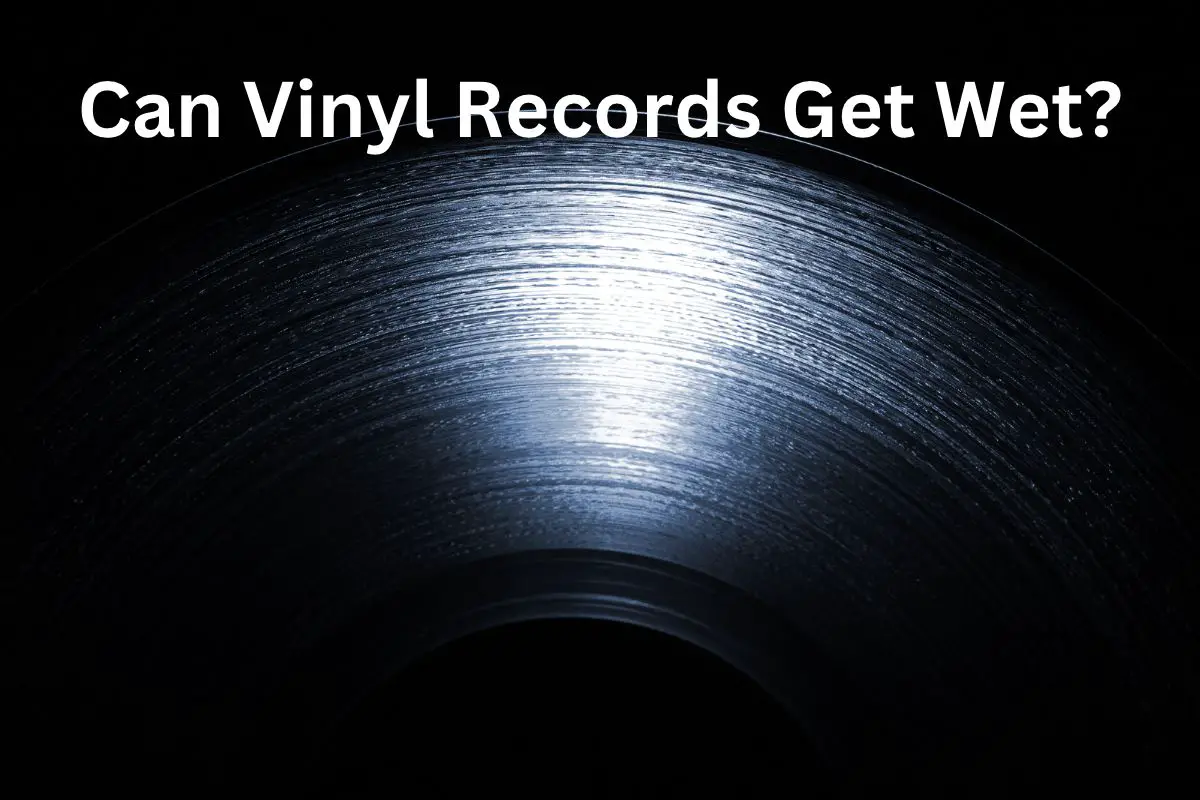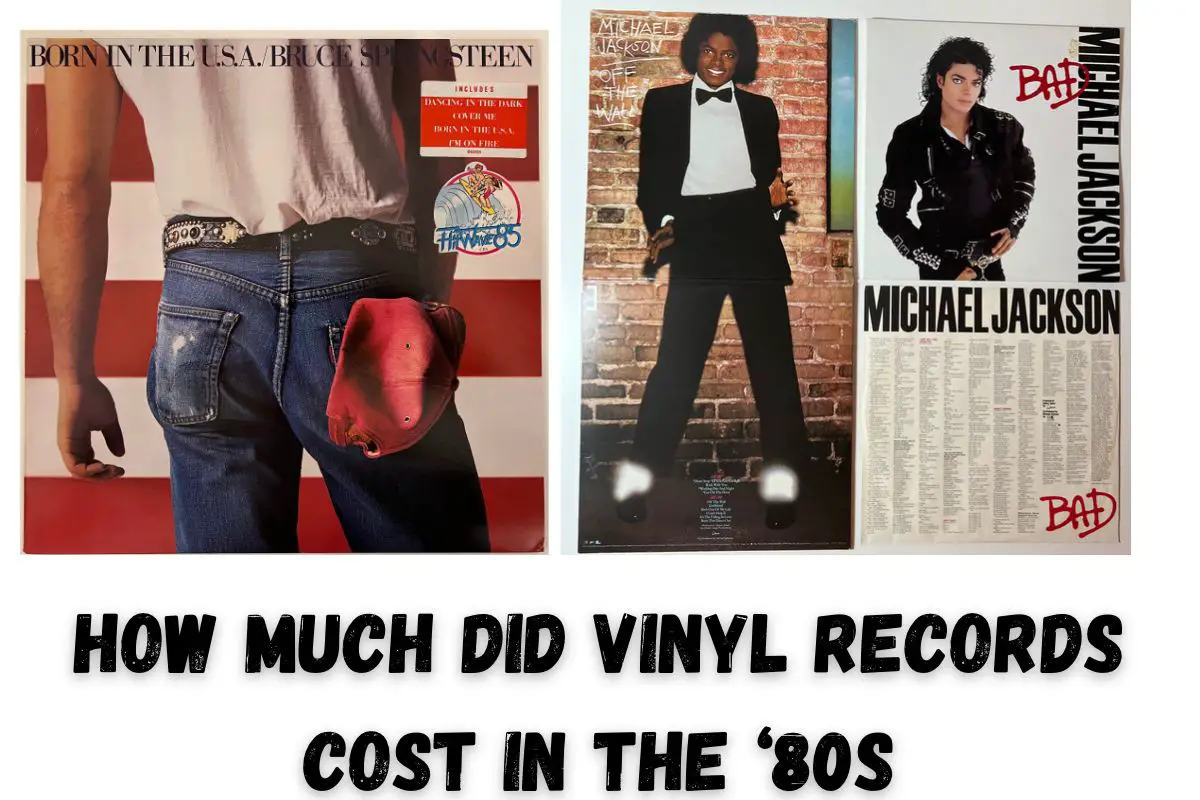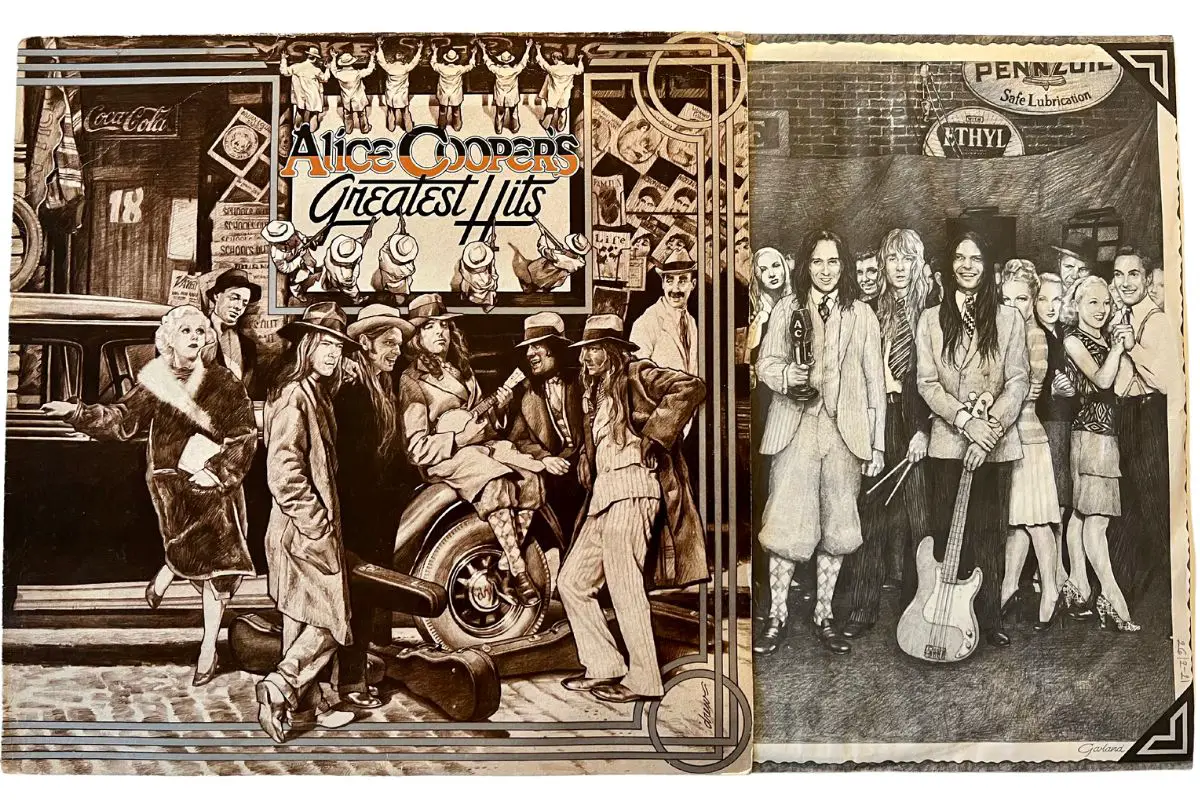This post contains affiliate links.
Vinyl records are increasingly becoming popular. Both collectors and turntable DJs are playing them regularly. However, they need proper care to ensure that these artistic pieces last longer and provide quality sound. In this article, we will provide a detailed guide on how to clean vinyl records.
Vinyl records need dry and wet cleaning with anti-static record brushes and vacuum record cleaners. Dry cleaning removes the more significant dirt and dust particles, while wet cleaning ensures permanent dirt is removed.
Besides covering the comprehensive cleaning methods, we will also examine why it’s crucial to clean vinyl records. Read on to find out more.
Table of Contents
Do Vinyl Records Need To Be Cleaned?
Over the years, vinyl records have evolved. Initially, these analog sound-storing mediums were referred to as phonographic disc records. Manufacturers made these phonographic records from shellac. With time, however, records made from polyvinyl chloride (PVC) became more common.
These records were then coined ‘vinyl’ records from the material they were made of. With time, all types of records were referred to as vinyl records, regardless of what they were made of.
As much as new formats were introduced (e.g., compact cassette), vinyl records retained a significant market share. However, in 1991, once the market share of compact disks rose, vinyl disappeared from the mainstream.
It was not the end of vinyl records as they made a comeback in the 21st century. This time, they were common in particular niches such as rock bands and with DJs. Over time, collectors have also increased with these pieces considered to be of historical and artistic interest.
Taking proper care of records, therefore, becomes necessary, no matter who owns them. One of the ways to do this is through preservation. To prevent gradual degradation of the audio, most collectors transfer the audio to other media. Preservation also involves playing the records once in a while (1).
Proper care for the vinyl also involves cleaning them regularly. In turn, owners are rewarded with the tremendous and lush sounds that they have to offer. The cleaning applies to both new and old records. Below are the reasons why cleaning records is essential.
Static Charge on Records
Playing records is fun, but with static, the process can be tedious. The static charge has no exception whether the record is new or old. In fact, before adding a vinyl record to your collection, it is already exposed to static (2).
Static electricity is a result of an electric charge building up in non-conducting materials. The moment two non-conductors are rubbed against each other, static is created. The vinyl itself is made of non-conductive material.
Vinyl comes into contact with other non-conductors during their production process. The records’ sleeves are also non-conductors, and the friction between the two also creates charge (3).
In order to ensure higher quality, lower noise floor, and better pressings, vinyl records are made purer and thicker. But unfortunately, this also means the concern with static electricity becomes worse.
Facts have presented themselves by comparing recent pressings and those from the 80s. Thinner records from the 80s are affected less with the static charge when compared to the latest pressings (4).
While it’s not possible for the static charge on the records to shock the users, it’s still detrimental. First, the sound from the record will be tampered with. Instead of the lush sound, one will get poor-quality audio.
Also, the records will be susceptible to dirt and, in turn, they will require thorough cleaning. The electric charge attracts dust meaning the vinyl surfaces will allow dust build-up. In this case, the vinyl records will act as literal dust magnets. Unfortunately, the static charge also threatens the lifespan of the needle.
You can find more info on removing static from vinyl records in this article: Best Way to Remove Static from Vinyl Records: 7 Easy Tips
Increase Record’s Lifespan
For a vinyl record to last long, it’s necessary to take the required measures. It applies to common records or rare records that are difficult to find. While records made from vinyl are known to be less prone to damage when compared to those made from shellac and acetate, they still require attention (5).
Proper storage and handling prevent slow degradation. Storage practices that you should carry out include storing the records on metal shelves instead of wood. It is to keep them from the contraction and expansion of the wood. Also, the vinyl shouldn’t hang over the sleeve’s edge.
Also, immediately after the records have been used, they should be placed in their jackets. Again, it would be best if you avoid unnecessary exposure to light and air. Keep in mind that the only places that should be touched when holding it are the label areas and the edge.
By operating a clean vinyl, one is also assured of an increased lifespan. Dirty and dusty records, on the other hand, may result in permanent damage to the vinyl. The increased friction may also damage the stylus (needle), and in turn, the tonal response may be affected (6).
As mentioned above, static electricity is generated when non-conductors are rubbed against each other. Therefore, the increased friction between dirty records and stylus only results in more dirt.
According to an analysis conducted, the dust removed on stylus tips included; 35% diamond dust, 12% jagged silica, and 40% miscellaneous particles (grit, soot). The rest consisted of lint and fibers (7).
Stay Free From Surface Noise.
First, it’s vital to understand that occasional surface noise on records is normal. This noise is expected when the music is sliding into existence. It also occurs between tracks.
However, there may be a problem when the hisses, clicks, and pop sound out of place. There are various reasons to consider. They include; excessive dirt or debris on the vinyl, excessive dust build-up on the stylus, or playing ancient records that require a deep clean.
Loud pops that prevent enjoyment of the track are caused by actual contamination. At times, one can identify the piece of dirt on the record. Other times, it’s safer to do a quick sweep on both sides of the record. Prior cleaning before use also results in minimal surface noise (8).
Clean Vinyl Records With Alcohol? We Find Out.
In order to ensure effectiveness, cleaning vinyl records requires caution and consciousness. Failure to do so may result in damage to the records. Scratches, for example, may form on the record if abrasive agents are used to clean them.
For vinyl enthusiasts, damage to their rare collection is a real fear. Using alcohol for cleaning, in particular, has been a debated issue over the years. For the most part, however, using it has been discouraged.
Adequate precaution is necessary when considering alcohol as a surface cleaner. It is because pure alcohol isn’t safe, and you should never use pure alcohol on records. However, there are commercially sold record cleaning agents that contain alcohol in them.
In an interview, Steve Chase, the founder of Groove Washer, stated why Dr. Bruce Maier (1970s Disc washer creator) steered clear of iso alcohol (high amounts). He mentioned that iso alcohol could remove plasticizers from the records and make the groove brittle.
He also mentioned that while other experts took pride in using high amounts of iso alcohol, its effectiveness was questionable. Mainly since the alcohol dried up too quickly, leaving no time for the contaminants to be removed (9).
One may still choose to use alcohol for cleaning their vinyl. However, there are two things they should be aware of. One, the alcohol used should be carefully selected and properly diluted. Also, it is not possible to guarantee that nothing will happen to the records.
Polyvinyl chloride has properties that make it resistant to solvents. It means that the base material of the records created from PVC is not affected by alcohol. The risk, however, comes in with the additives in the Polyvinyl chloride, e.g., plasticizers.
As mentioned before, one of the things alcohol could remove is plasticizers. Plasticizers, together with extenders and stabilizers, ensure the vinyl record has flexibility. Unfortunately, once these additives react to the alcohol, their bonding to the record’s surface is compromised. Therefore, this makes alcohol a less desirable cleaning choice for Vinyl records (10).
The decision to use isopropyl alcohol, therefore, would require usage in small quantities. Failure to control this solution can cause it to turn into an abrasive quickly. The risk is much higher when it comes into contact with acetic acids (such as vinegar).
Using distilled water to rinse vinyl records cleaned with isopropyl alcohol is recommended. However, due to their delicate nature, you shouldn’t clean shellac records with any kind of alcohol.
Since some vinyl cleaning agents contain alcohol, going through the ingredients before purchase or use is necessary. Types of alcohol to look out for include ethyl alcohol, pure alcohol, and methyl alcohol. Isopropyl should also be in small quantities.
How to Deep Clean Vinyl Records

There are two primary cleaning methods, dry cleaning, and wet cleaning. As the name suggests, dry cleaning does not involve any solutions, while wet cleaning involves a cleaning solution.
Record owners should conduct dry cleaning every time they take out a record to play. You should do cleaning both before and after the record is played. It keeps the record in great shape. It is because you will remove superficial dirt regularly. Therefore, the chances of the dirt permanently sticking onto the grooves are minimal.
The best tool to use is an anti-static record brush. These brushes tend to have two bristle rows. While one row removes dirt and dust on the record, the other row is meant to de-stat. By minimizing the static build-up, the chances of dust clinging on the record are also reduced.
You should start by brushing the record’s surface gently. It should be done in a circular motion while following the grooves. You should apply only light pressure in this case since the aim is to remove large dirt and dust particles. Using too much pressure may destroy the grooves.
However, there are scenarios where different cleaning methods need to be incorporated. Deep cleaning will offer a thorough clean by using specific solutions.
The first scenario is when you’re playing a record (regardless of whether it’s brand new or second-hand). The second scenario is with visibly dirty records, they don’t sound good, and they don’t respond to dry cleaning.
Below is a detailed guide on how to deep clean vinyl records.
Prepare The Cleaning Solution.
Deep cleaning vinyl records requires a wet method. That is, incorporating a solution to ensure thorough removal of dirt. Once you decide to use a homemade solution, it is essential to prepare it correctly.
The necessary ingredients include isopropyl alcohol, a rinse agent, and distilled water. Dishwasher fluid can serve as the rinse agent. However, it should be both fragrance and color-free.
The dishwasher fluid is essential as it breaks the vinyl’s surface tension. It then allows the solution to reach the deeper parts of the record’s grooves.
Take a few drops of the rinse agent, three parts of the distilled water, and one part of the iso alcohol. Distilled water is preferred as it does not contain impurities when compared to tap water. You can use a bowl to combine the ingredients and then gently stir. Alternatively, you may opt to use a spray bottle, provided you shake well before use.
There are homemade solution recipes that recommend using ‘Free Clear’ laundry detergent instead of iso alcohol. In order to avoid damage to the vinyl, it is required that the detergent is free of fragrances, phosphates, or color agents (11).
Keep in mind, however, that using homemade solutions is taking a chance. Therefore, proper dilution of the alcohol is necessary.
Using Pre-Packaged Solutions
Pre-packaged solutions are a bit costly when compared to homemade solutions. Also, the ease of availability of home solutions makes for a strong argument against pre-packaged stuff. However, they go a long way in ensuring the records are clean, safe, and protected. Therefore, they are a much-needed investment if you truly want your vinyl for the long haul.
Both record stores and music stores sell these solutions. Before making any purchases, you should ensure the ingredients used will be favorable on your vinyl. Most of these solutions come with detailed instructions for proper application.
Pre-packaged solutions are highly effective whether cleaning by hand or using a machine. However, using cleaning solutions designed for cleaning devices is recommended. Fortunately, there are plenty of cleaning solutions one can choose from.
There are cleaning solutions packaged individually, while there are those packaged in kits. Cleaning solutions packaged individually tend to be enough for an entire record collection. Especially since they only require a few drops. Solution kits come with cleaning fluid, microfiber cloths, and soft brushes, which are convenient.
A pre-packaged solution is suitable for absolute purists and collectors with hundreds of dirty records (12).
Put The Vinyl Record On A Cleaning Mat.
Finding a suitable surface before cleaning is vital. Cleaning mats are a good option. These mats are made of soft material that will be gentle on the records. It offers an excellent solution for those fearful the solution would seep into the turntable. The attached spindle would ensure the vinyl is secure.
However, there are mats meant for dry cleaning. Therefore, they cannot handle the solution. Prior confirmation would prevent unnecessary accidents.
Instead of the turntable, you may opt for other flat and stable surfaces, such as a table or a desk. In cases where a record cleaning mat is unavailable, a micro-fiber towel should suffice. The main aim is for the surface to be non-abrasive and can handle the solution.
Apply Cleaning Solution On Record
There are two main ways to apply the cleaning solutions on the record. The first is by spraying a few drops on the vinyl surface. For this, the solution needs to have a spray function.
In order to completely cover the vinyl’s surface, five mist sprays should be enough. First, spray the solution at a distance of about 15cm. After spraying, give the cleaning solution a few seconds to seep into the grooves.
If you mix your cleaning solution in a bowl, you may choose to transfer it to a new receptacle, such as a dry spray gun. Alternatively, you may work on it as it is. Using a microfiber cloth, dab the solution onto the vinyl record. The aim is to make the record slightly damp, not to drench it. Therefore, you should avoid overdoing it.
Caution should be exercised when applying the solution. It is to prevent the label from getting wet. The solution may discolor the label or cause the label glue to loosen. Both incidents will be detrimental to the record’s label and destroy its aesthetic aspect. You may choose to purchase a record label protector disc to keep the fluid from getting to the label.
Wipe Solution With A Microfiber Towel
Take hold of your clean microfiber towel and wipe the solution. Start at the center of the record and wipe in a clockwise direction. Avoid wiping across the grooves; instead, move along them. Apply gentle pressure so that the microfiber towel gets into contact with the inner parts of the groove. It will wipe off any visible and invisible blemishes as you continue.
Once you get to the record’s outer edge, begin the rubbing process in a counterclockwise direction. The same way the needle does when the vinyl is playing. As you do this, ensure your fingers are flat. It is to avoid scratching the record with fingernails.
Once done with one side of the record, flip it and work on the lower surface. Soak a towel in distilled water and rinse both sides. Once cleaning is over, you should let the record dry.
There are several ways of letting this happen. Some prefer to let the vinyl air dry. Placing it on a rack for this to happen is advisable. However, by air drying the record, it runs the risk of dirt settling on it again. Instead, you should use a dry microfiber cloth to speed up the process.
Before tucking the records away again, they need to be entirely dry to prevent mold from growing. It especially applies if the cleaning solutions used contained alcohol.
Want more details? Check out this guide I wrote about cleaning vinyl records with microfiber: A Step By Step Guide To Cleaning Vinyl Records With Microfiber

Use A Cleaning Machine
As seen above, there are several ways that one can clean a vinyl record. For those who don’t wish to use their hands, they can use a machine to clean. These machines allow one to save both time and effort. However, before purchase, you may be required to save up as the devices can get costly. In fact, they can go as high as $500 (13).
When it comes to record cleaning machines, both manually operated and power operated devices exist. Finding one that suits your cleaning needs will require adequate research. When on a budget, however, machines that use a brush to clean are preferable.
Purchasing cleaning machines particularly applies to those with extensive record collections. These machines give the vinyl an actual bath. They incorporate both distilled water and cleaning solution. You’re required to spin the vinyl record through the solution for about a minute. The built-in brushes get rid of the dirt.
What Can You Use to Clean Vinyl Records?
Vacuum Vinyl Record Cleaners
Despite their costly nature, vacuum vinyl record cleaners offer several benefits that hand cleaning cannot. Not only do they minimize pressure used, but they also reduce the amount of physical contact on the delicate vinyl. Additionally, they suck up the dust and dirt found on the grooves.
The vacuum cleaners contain motors that rotate the vinyl as the suction arm does the cleaning. It makes cleaning thousands of records easier without worrying about fatigue, time spent or changing micro-fiber cloths regularly.
The cleaning solution is applied manually, and the motor rotates the vinyl. Once the entire surface is covered, the suction arm is put over the record, and the dirt and solution are removed. Within seconds, the vinyl record is clean and ready to be played.
However, allowing the suction arm to rotate for too long with the record already dry may damage the record and wear out of the felt pads.
Wood Glue
Unconventional as it may seem, many collectors vouch for wood glue as a record cleaner. In theory, both the wood glue and the vinyl’s materials are made chemically similar. So much so, the glue can’t stick to the record. However, it will stick to all the dirt and dust on the vinyl (14).
An experiment was conducted to test the truth concerning wood glue’s effectiveness on vinyl records (15). The result was remarkable effectiveness on heavy-duty stain removal. In one application, you should have eliminated most of the excessive grime on the disc used.
However, this process is not without its disadvantages. The process is complicated since wood glue is not easy to work with. Major requirements include a surface that you will discard afterward and gloves to keep hands protected.
The amount of glue needed on one surface is too much, meaning the total cost on many records would be expensive. The process also takes too long. It is because you have to wait for the glue to dry, peel it off, rinse the disc and dry it again.
FAQs
How To Clean Vinyl Records With Windex?
You should avoid household cleaning products like Windex completely. It is because they are very abrasive cleaners and pose threats to vinyl records. Instead, collectors should utilize three parts distilled water, dishwasher fluid, and one part isopropyl alcohol to save up on cleaning solution costs.
I wrote a specific article about why you never should use Windex to clean your vinyl records.
What’s The Best Way To Clean Vinyl Records?
You should clean vinyl records every time before and after playing using an anti-static record brush. It goes a long way in increasing their lifespan and minimizes the chance of permanent dirt and dust.
For extraordinarily soiled or old vinyl records, a deep clean is recommended. This deep clean will incorporate a cleaning solution. Depending on the number of records, one may clean by hand or with a machine.
How Do You Clean Vinyl Records Without Damaging Them?
When purchasing cleaning solutions, be sure to check on the ingredients that make up the solution. It is because some ingredients, such as pure alcohol, may end up damaging the vinyl records.
Also, in situations where isopropyl alcohol is used, you should use it sparingly. Using microfiber cloths will also prevent the records from scratches.
Related Articles:
Sources
- Phonograph Record, Wikipedia, https://en.wikipedia.org/wiki/Phonograph_record, Accessed 24th October 2021
- The Importance of Cleaning Your Records, The Vinyl Revivers, https://thevinylrevivers.com/the-importance-of-cleaning-your-records/, Accessed 24th October 2021
- Ed Selley, How to Deal With Electricity And Your Records, Vinyl Me Please, https://magazine.vinylmeplease.com/magazine/how-to-deal-with-static-electricity-and-your-records/, Accessed 24th October 2021
- Static & Your Record Collection, Planet Of Sound, https://www.planetofsoundonline.com/pages/static-your-record-collection,Accessed 24th October 2021
- Conservation and restoration of vinyl disks, Wikipedia, https://en.wikipedia.org/wiki/Conservation_and_restoration_of_vinyl_discs#Storing Accessed 24th October 2021
- Steve Guttenberg, Do vinyl LPs wear out? The Audiophiliac takes on that myth, cnet, https://www.cnet.com/tech/home-entertainment/do-vinyl-lps-wear-out-well-bust-that-myth/, Accessed 24th October 2021
- The Wear and Tear of Records and Styli, Shure, https://service.shure.com/s/article/stylus-wear-and-record-wear?language=en_US, Accessed 25th October 2021
- What is Surface Noise? -How Much is Too Much? Sonic Elevation, https://sonic-elevation.com/what-is-surface-noise-how-much-is-too-much/, Accessed 25th October 2021
- Marc Henshall, Is it Safe to Slean Vinyl Records with Alcohol? Sound Matters, https://www.yoursoundmatters.com/is-it-safe-to-clean-vinyl-records-with-alcohol/, Accessed 25th October 2021
- Joe, Cleaning Vinyl Records with Alcohol: Is it Safe? Vinyl Record Life, https://www.vinylrecordlife.com/cleaning-vinyl-records-with-alcohol-is-it-safe/, Accessed 25th October 2021
- LP Record Cleaners vs Homemade Solutions, Spin Clean, https://spinclean.com/lp-record-cleaners-vs-homemade-solutions/, Accessed 25th October 2021
- Steven Williams, A Side-by-Side Test of Vinyl Record Cleaning Solutions, Discogs Labs, https://blog.discogs.com/en/side-by-side-test-vinyl-record-cleaning-solutions/, Accessed 25th October 2021
- Wiki How Staff, How to Clean Vinyl Records, Wiki How, https://www.wikihow.com/Clean-Vinyl-Records, Accessed 26th October 2021
- How to Clean Vinyl Records, Colored Vinyl Records, https://coloredvinylrecords.com/blog/how-to-clean-vinyl-records/, Accessed 26th October 2021
- Steven Williams, A Side-by-Side Test of Vinyl Record Cleaning Solutions, Discogs Labs, https://blog.discogs.com/en/side-by-side-test-vinyl-record-cleaning-solutions/, Accessed 25th October 2021
VacationVinyl.com is a participant in the Amazon Services LLC Associates Program, an affiliate advertising program designed to provide a means for sites to earn advertising fees by advertising and linking to Amazon.com. We also participate in other affiliate programs which compensate us for referring traffic.




